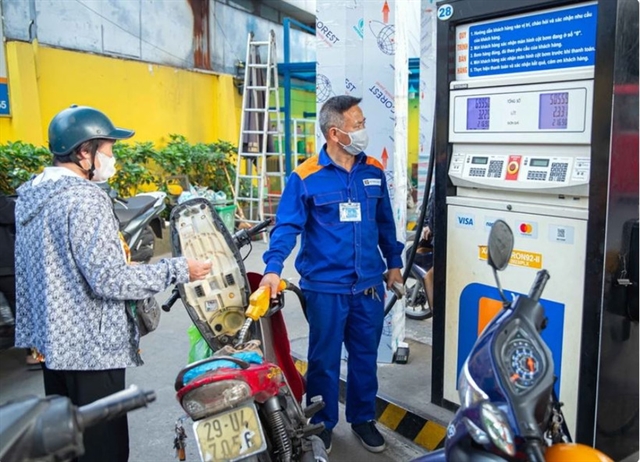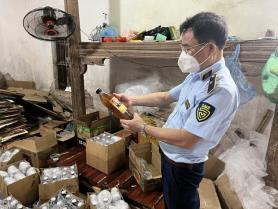The Petrol and Oil Price Stabilisation Fund currently holds more than VNĐ6 trillion (over US$230 million). Economists said the fund has become an indirect tax, on top of being vulnerable to misuse and profiteering. It has also not been used in months.

HÀ NỘI — Despite ongoing fluctuations in global fuel prices, the Ministry of Industry and Trade and Ministry of Finance have not yet tapped into the Petrol and Oil Price Stabilisation Fund, even though the fund currently holds more than VNĐ6 trillion (over US$230 million).
Data from early 2025 shows that even during periods of sharp increases or deep drops in fuel prices, the two ministries have consistently followed a 'no contribution, no disbursement' approach. This pattern also held throughout 2024, when petrol prices at times exceeded VNĐ25,000 per litre, yet the fund was left untouched. As a result, public concern continues to grow about the fund’s relevance and effectiveness.
A recent report from the Ministry of Industry and Trade indicates that by the end of Q1/2025, the fund balance across fuel enterprises stood at around VNĐ6.08 trillion. This excludes balances held by traders no longer authorised as key importers.
Petrolimex holds over VNĐ3 trillion, Đồng Tháp Petroleum Trading Company more than VNĐ460 billion, Thanh Lễ Import-Export Corporation over VNĐ390 billion, the Military Petroleum Corporation more than VNĐ300 billion and Saigon Petro over VNĐ328 billion. Smaller players like Hòa Khánh General Trading and Services Company also hold VNĐ165 billion. On the other hand, some firms report negative balances, including PVOIL, Petro Bình Minh and Trường An Group.
Speaking to newspaper Tiền Phong (The Vanguard), Dr Nguyễn Đức Độ, deputy director of the Institute for Economics and Finance, explained that the fund was initially created to buffer against sudden price hikes and protect both the economy and households. It served as a regulatory tool during a time when the market was not fully liberalised.
However, recent scandals suggest that the fund has been susceptible to misuse and profiteering. Dr Độ attributes this to lax oversight and a lack of transparency, allowing some key fuel importers to hoard fund money to earn bank interest or delay contributions, essentially converting it into interest-free working capital. Meanwhile, the public has little clarity on where their contributions go.
“The fact that the fund remains unused shows that regulators tacitly acknowledge this tool is no longer compatible with today’s competitive and globally integrated market,” he said.
Dr Nguyễn Tiến Thỏa, former head of the Ministry of Finance’s Price Management Department, was more direct: “The fund is effectively an indirect tax, collected from consumers for an undefined future use. It distorts market signals and encourages reliance on State support, especially among major distributors.”
He added that the current balance is no longer a strong enough buffer to support the entire market. In a crisis scenario, the fund would only provide limited relief, falling short of its supposed stabilising function.
When asked why the fund hasn’t been used, a senior official from the Domestic Market Department at the Ministry of Industry and Trade acknowledged that the fund has shown multiple shortcomings. However, they argued that the seven-day fuel pricing cycle, as regulated under Decree 80, has already helped align domestic fuel prices with global trends.
They also noted that timely updates to fuel costs have given companies the motivation to ensure adequate domestic supply. As a result, fuel price adjustments have had little impact on the overall economy.
The fund’s very existence may now be under review. In the sixth draft of the new fuel trading decree submitted by the Ministry of Industry and Trade, the fund is not mentioned at all, a marked departure from Decrees 83 and 95. The proposed framework would shift price-setting power to enterprises, which would calculate prices based on actual costs and publish them weekly.
Specifically, the draft states: “In cases of unusual market price fluctuations… the Ministry of Industry and Trade, in coordination with the Ministry of Finance, will propose stabilisation measures to the Government.” Companies wishing to maintain contingency tools would need to develop internal mechanisms or rely on broader fiscal policies. — VNS





